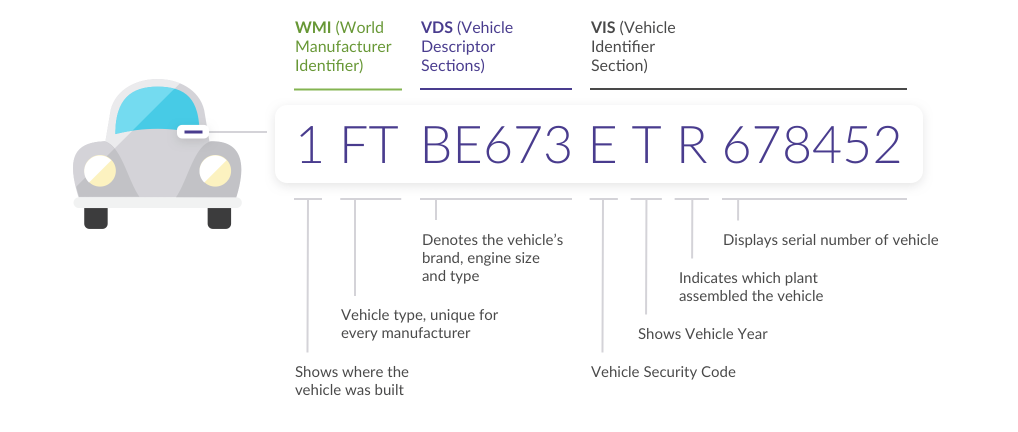VIN DECODER
What is a VIN Number?
Car manufacturers assign every new vehicle a unique vehicle identification number, or VIN. The VIN is like a Social Security number for a car—it’s a 17-digit identifier that tells you where and when the vehicle was made and provides important information about car style, engine size and trim.
As a vehicle owner, it’s important to run regular VIN reports.
They help you stay updated on your car’s history, track its market value, and check for any safety recalls or past records tied to your vehicle identification number (VIN).

Where is the VIN number located on a vehicle?
The location of a VIN number can vary depending on the type of vehicle:
Cars & Trucks:
On most modern vehicles, the VIN is found on the front of the driver’s-side dashboard, visible through the windshield. If not there, check the sticker on the driver’s door frame or door edge. Some older models may have the VIN stamped on the engine block or vehicle frame.Motorcycles:
The VIN is typically stamped on the steering neck (near the handlebars) or printed on a metal plate attached to the frame.Boats:
Boats use a similar identifier called the HIN (Hull Identification Number), which is usually engraved on the upper right section of the boat’s transom (rear). It can also appear on registration or insurance documents.
If you can’t find the VIN or HIN on the vehicle itself, check the title, registration, or insurance papers — it’s always recorded there.
How to look up a VIN number?
VIN numbers were standardized to the current 17-digit format in 1981; older cars also have VINs, but the formats vary. Once you know how to read a VIN number, the system works on cars with the model year of 1980 or newer.
The 17-digit VIN can be thought of as three distinct sections: the world manufacturer identifier, the vehicle descriptor section and the vehicle identifier section. The first three digits of the VIN are the world manufacturer identifier. The first digit represents the country, the second designates the region and manufacturer, and the third denotes the division.
Digits four through nine are the vehicle descriptor section, which describes the model, body style, transmission, engine type and other vehicle attributes. The ninth digit in this section is a “check” digit used to confirm the VIN is valid.
Digits 10 through 17 are the vehicle identifier section. The 10th digit indicates the model year. The letter A designates 1980, the letter B designates 1981 and so on until 2001, when the year designation switches to numbers. The model year 2001 is designated by the number 1 and each successive number indicates the next model year until 2009, when it reverts to the letter A for the 2010 model year. The year designator switches to numbers again in the model year 2031.
The letters O and Z and the number 0 are not used in VIN numbers.
The 11th digit indicates the specific plant where the vehicle was manufactured; each automaker has its own set of factory codes.
Digits 12 through 17 are the vehicle’s serial number. This sequence isn’t standardized, so each automaker establishes its own numbering system. Some manufacturers simply use this number to show the order in which the car rolled off the assembly line. Under this system, for example, the 500th car would have the digits 00500 in the serial number section.
Working with Trusted Data Networks
We rely on recognized automotive and government data channels to ensure every VIN lookup provides accurate and up-to-date vehicle information.







